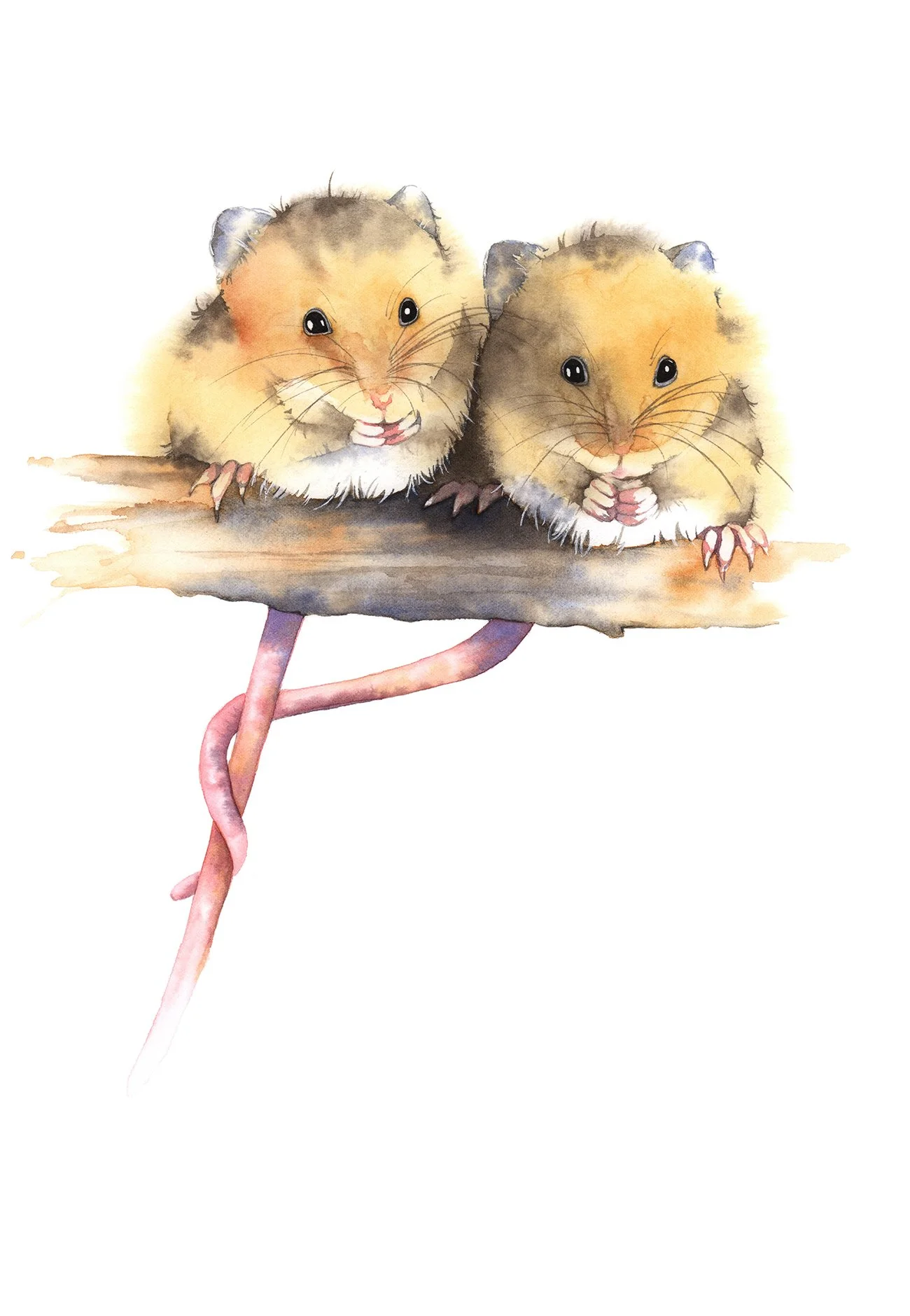How Do You Mix Black Watercolour Paint?
When it comes to the shady business of blacks, artists often find themselves at a crossroads. Do you grab that pre-mixed black straight from the tube, or do you dive into the mixing adventure, concocting your own shadowy magic?
I used to grab the pre-mixed blacks because it was easier than trying to mix my own but now I know better. Mixing blacks can infuse life into your paintings, so these days I tend to give pre-mixed blacks the side eye.
I used pre-mixed Lamp Black on this watercolour painting of a Steller’s Jay above, whereas on the little Grey Fantail below, I mixed my own black from Permanent Alizarin Crimson, Winsor Green and Phthalo Blue. The black feathers of the Steller’s Jay look a bit lifeless in comparison to the black feathers of the Fantail.
The advantage of mixing blacks
When it comes to colour mixing it's important to learn how to mix black because pre-mixed tube blacks, tend to look a bit flat. They can be lifeless and drab, using them is a bit like listening to a cover band when the original artist is in town.
In my diary, I've painted swatches of Daniel Smith's Lunar Black and Winsor & Newton's Lamp Black. The colour swatch at the bottom is a simple mix of Burnt Sienna and French Ultramarine.
The pre-mixed blacks appear a bit dull and uninspiring compared to the black I mixed myself. There's just something about the personally mixed hue that adds a touch of life to it. It's subtle, but it makes a difference.
When you mix blacks you can also adjust the temperature of the colour which will add some life to your paintings. Because you are mixing colours together, you are in control of the ratios. If you want a cool black, mix more of the cool colour you are using. If you want a warm black use a bit more of the warm colour you are mixing with.
I have a video demonstrating how I painted this little chicken. I used two complementary colours to mix black: Permanent Alizarin Crimson and Winsor Green (blue shade).
What colours can you use to mix black watercolour paint?
While there's no single recipe to create black, you can achieve a range of rich, dark tones by combining primary colours or complementary colours. Here are a couple of common ways to mix black:
Complementary Colours: Mix equal parts of two complementary colours. They are those colours that sit opposite each other on the colour wheel. For example:
Red + Green
Blue + Orange
Yellow + Purple
Primary Colours: Another method is to mix all three primary colours (red, blue, and yellow) together in equal parts. Dark shades can be adjusted by tweaking the ratios.
Earth Tones: Combining earth tones, such as Burnt Sienna with French Ultramarine, can also produce a rich, intense black.
Use transparent yellows when mixing black watercolour
If you are using yellow in your black mixture it's best to use transparent yellows rather than opaque yellows because opaque yellows tend to muddy the mixture and the blacks you create with them aren't as vibrant as the blacks you can create with a transparent yellow.
This is black mixed from three primaries: French Ultramarine, Permanent Alizarin Crimson and Quinacridone Gold.
My favourite paint colours to mix black watercolour
The easiest way I know how to make black is to mix French Ultramarine with Burnt Sienna.
I prefer to use just two colours because it's easier to mix two colours than it is three colours. I find when I mix three colours together I waste a lot of paint trying to adjust the ratio of each colour.
When I use French Ultramarine and Burnt Sienna to mix black I can do it quickly with virtually no paint wastage. I can easily adjust the temperature of the black paint as well. If I want a cool black I mix more French Ultramarine into the mixture. If I want a warm black I use more Burnt Sienna.
The two colours together also make a beautiful grey that I use in many of my paintings.
How to mix black watercolour and other dark colours
When mixing dark colours like black, I prefer to use freshly squeezed tube paint. This allows me to combine colours without the need to introduce water to hardened pigments on the palette.
Mixing a dark colour with fresh, soft pigment straight out of the tube.
Using a slightly moist brush means I'm not diluting the mixture and I can maintain the desired richness. Once I arrive at the colour I want, I can pull portions of the thick mixture away from the main puddle, allowing me to add some water if necessary. If I wash my brush between colours I make sure I dab it on a towel to remove moisture so that I don't dilute the mixture with excess water.
When I arrive at the colour I want, I pull some of it away from the main mixture and I add a small amount of water.
So, whether you're Team Pre-mixed or Team Mix-Your-Own, the art of infusing personality into your paintings lies in your hands. I hope you dip into the vibrant adventure of mixing your own blacks because there's an undeniable charm in the flexibility of adjusting temperatures and creating dark tones that breathe life into each painting.
If you are interested in learning to paint in watercolour, I have over 170 online, voiced over watercolour tutorials for all skill levels.
Originals and prints are available to purchase as a print in the shop.
Further reading: 9 Watercolour Texture Techniques















